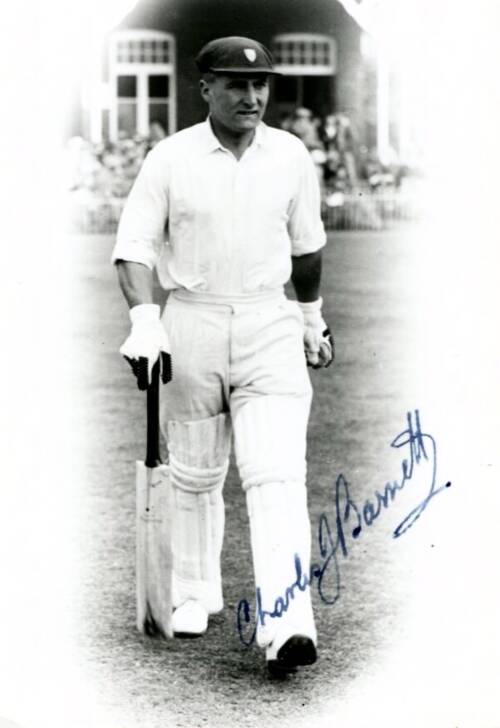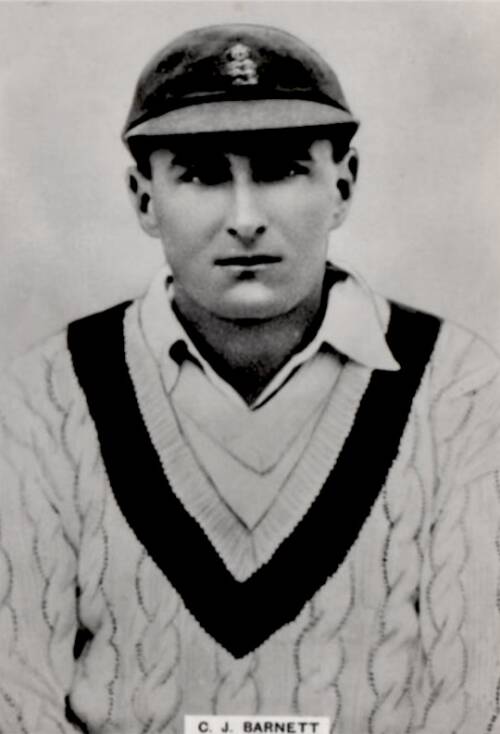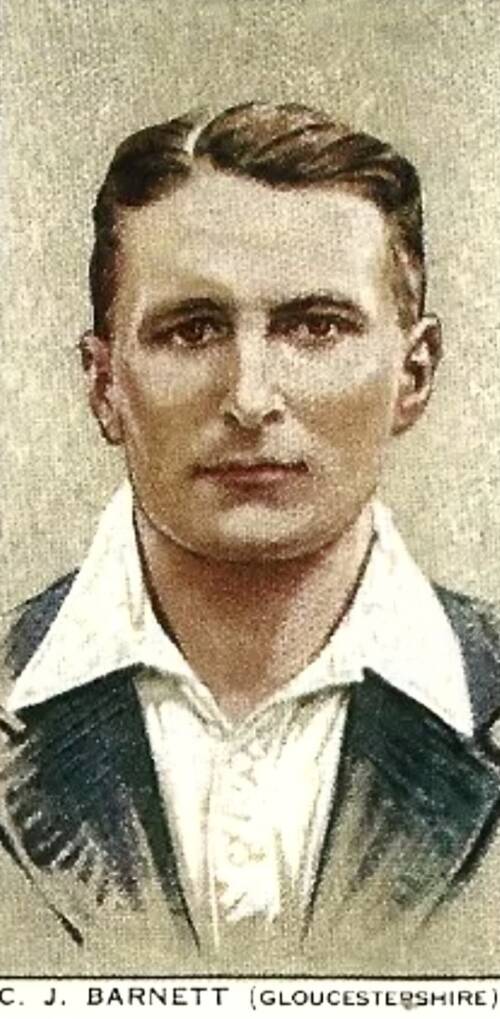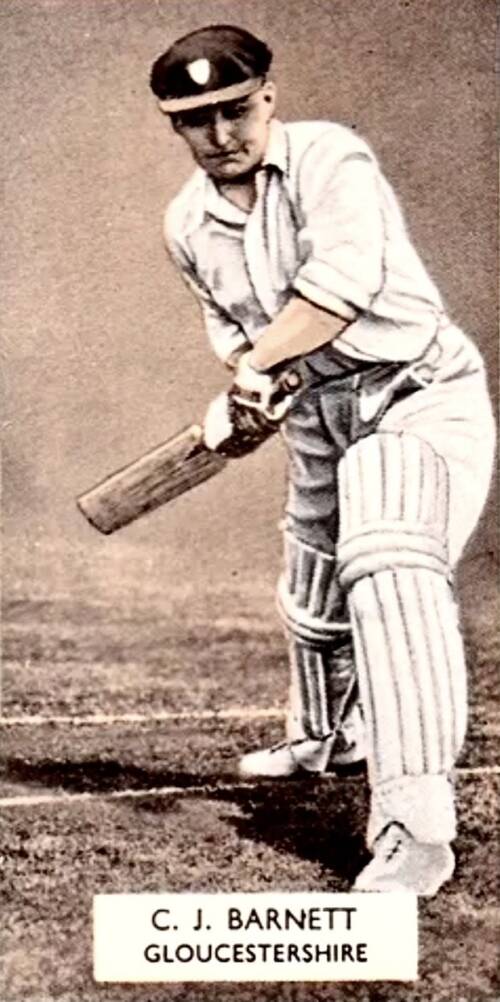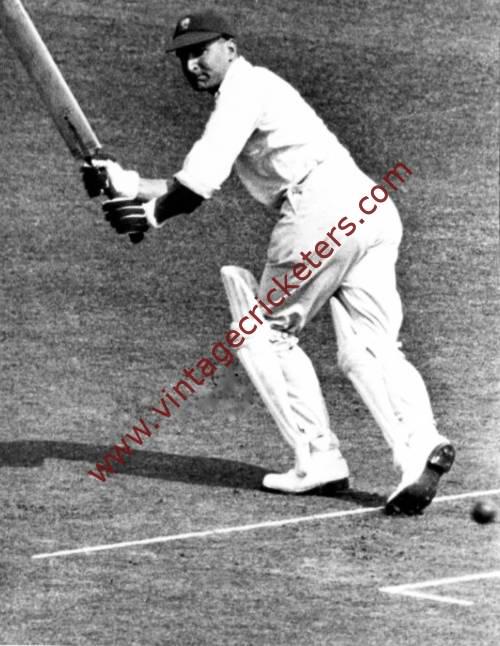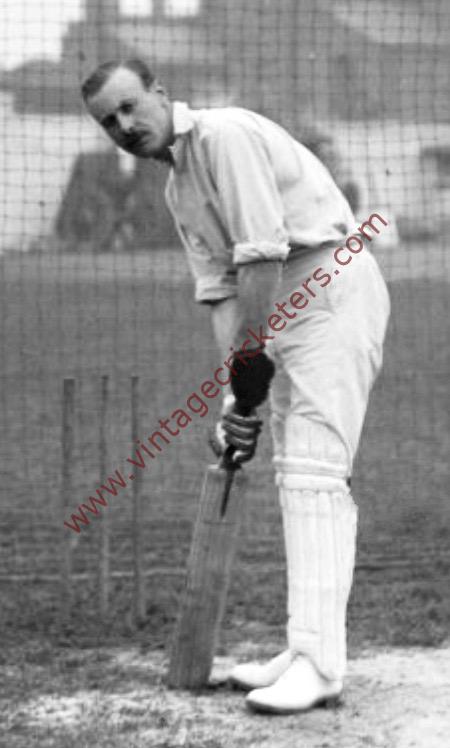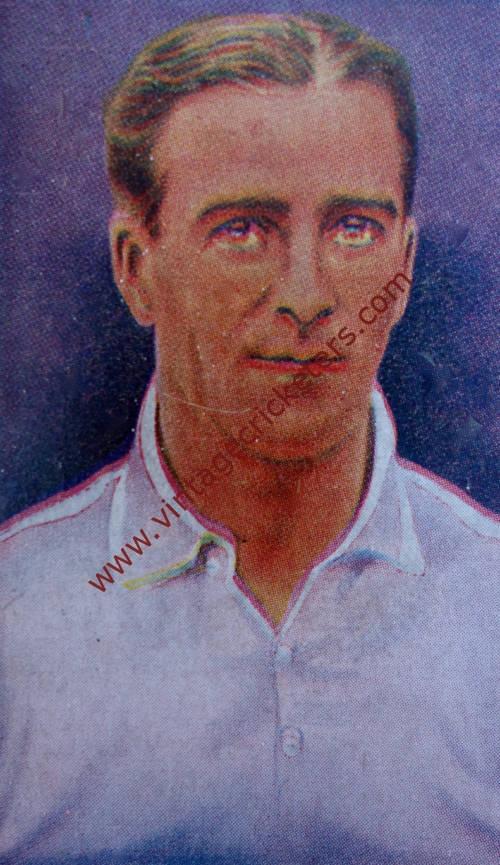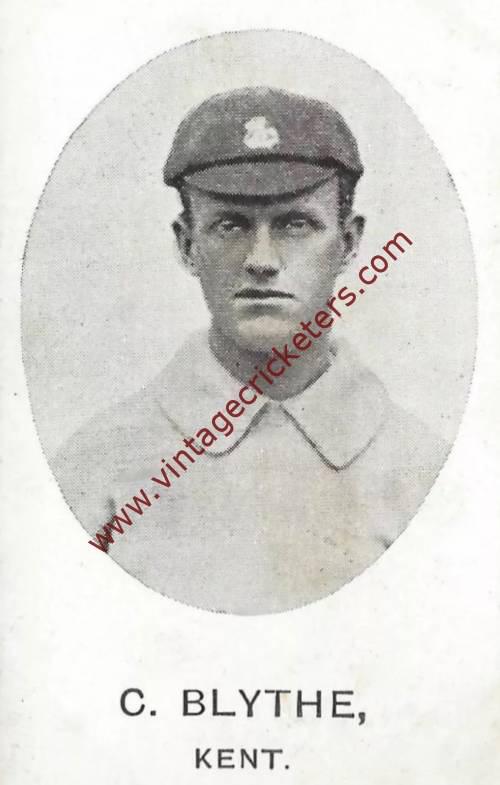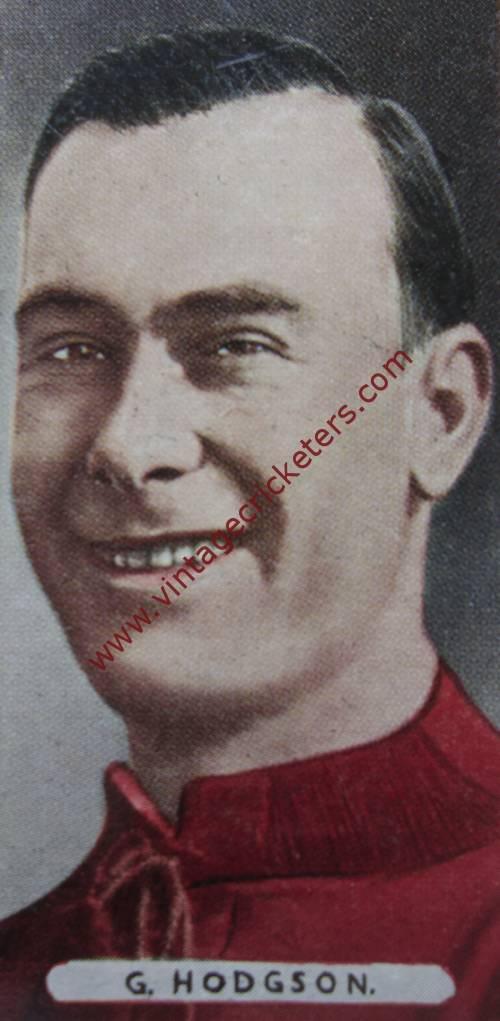Please choose your photo size from the drop down menu below.
If you wish your photo to be framed please select Yes.
Note: 16″x 20″not available in a frame.
Images can also be added to accessories. To order please follow these links
£8.95 – £49.95
Please choose your photo size from the drop down menu below.
If you wish your photo to be framed please select Yes.
Note: 16″x 20″not available in a frame.
Images can also be added to accessories. To order please follow these links
The maximum number of views of this element is reached.
Please contact the webmaster to enable unlimited views.
Cheltenham, Gloucestershire born right-handed batsman Charlie Barnett came from a well-known Gloucestershire cricketing family – his father (C.S. Barnett) and two uncles all played for the County as amateurs – and after going to Wycliffe College, he began as an amateur making his debut against Cambridge University in 1927, when he was 16, although he subsequently turned professional in 1929. In the dressing-room he became known as “The Guv’nor”.
One of the most stylish batsman of the 1930’s, Barnett began his career in the middle order for Gloucestershire, but made his name as an opener after the retirement of A.E. Dipper in 1932. In May 1933 he scored his first century in County cricket and in August he made 111 and 93 against Somerset. The greater responsibility of opening had added a tighter defence to his flashing array of drives and cuts, and he was picked for England against the West Indies, making his Test match debut at The Oval in August 1933. He marked his debut with a half century, making 52 batting at number 8, and passed 2,000 runs for the season, ending the season with 2,280.
Barnett’s attacking style was based on driving and a scorching square cut if given room; it was his ability to drive on the up on the sandy Bristol wickets which particularly astonished his team-mates. Although he remained vulnerable to an early dismissal, once set he was a formidable player and he recorded 48 centuries in all, with 113 half centuries. Eleven sixes in an innings of 194 against Somerset in 1934 stands as a testament to the power of his stroke play. In the same year he simply flogged the bowling for 170 against Worcestershire at Dudley. Between 1933 and 1948 he passed the 2,000 mark four times, and only twice scored less than 1,500 runs in an English season.
Barnett played in 20 Tests for England before and after the Second World War and scored two Test centuries, making 129 at Adelaide in January 1937, and putting on 219 for the first wicket with Len Hutton against Australia at Trent Bridge in 1938, as England compiled 658-8. His undefeated 98 before lunch on the first day of that Ashes series, remains the closest any Englishman has ever come to recording a century before lunch, on the first day of a Test match against Australia, he was eventually out for 126.
He gradually developed his left arm medium pace bowling, as a useful adjunct to his batting. In 498 first class matches during his career, he took 394 wickets at 30.98 with a best performance of 6-17, to go with the 25,389 runs at an average of 32.71, his Test match average was 35.41. He also took 320 catches in first class play.
However his career, like so many others, was stymied by the Second World War, during which he served in the RAF. He returned after the War, playing in four more Tests with little success, and retired from the County game to take up a Lancashire League engagement for Rochdale, having played his last first class match in 1948.
NB the photograph, taken during the First Test against Australia at Trent Bridge on 10th June 1938, shows Barnett batting during his innings of 126, with Ben Barnett keeping wicket behind him.
Vintage Cricketers was founded in July 2019. There are more photographs of this cricketer in the Vintage Cricketers library, which are due to be loaded in due course. In the meantime, please send a message to us using the contact form at the bottom left of this page and we can arrange to prepare and publish all images of this cricketer if you have a particular interest in him.
| Weight | N/A |
|---|

